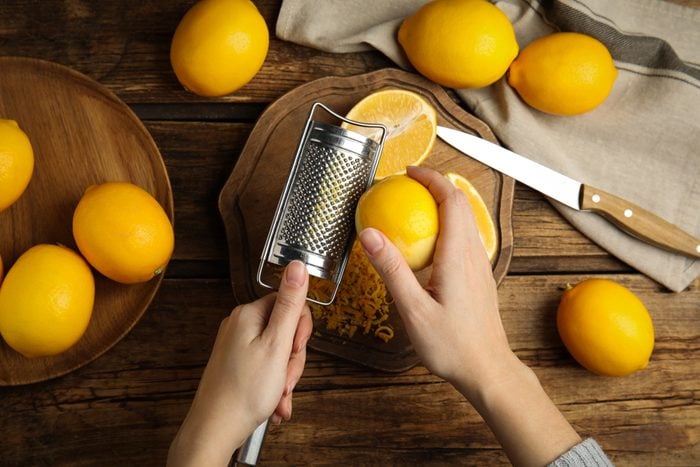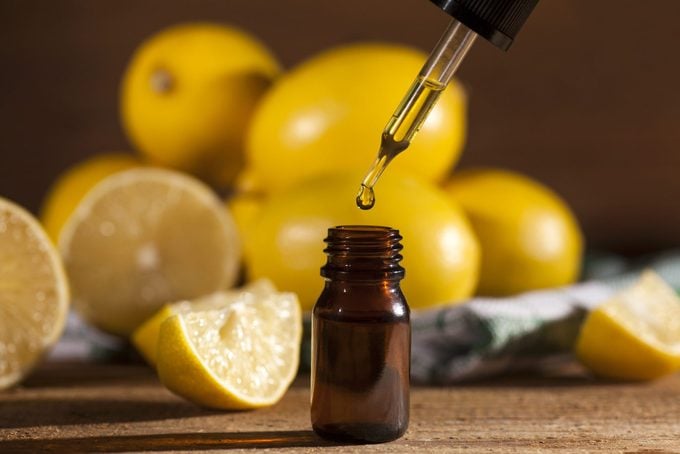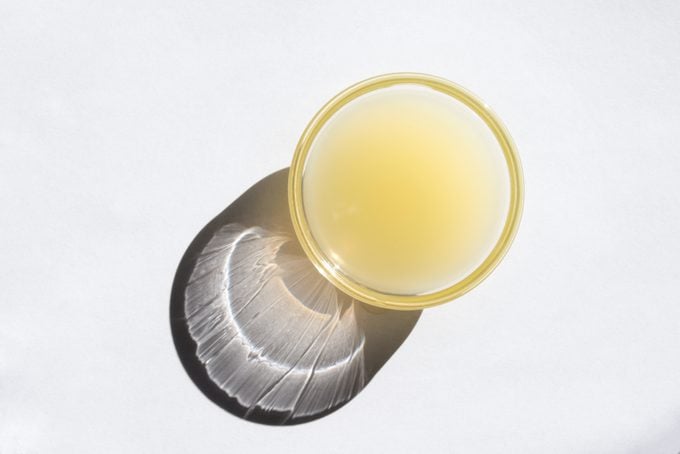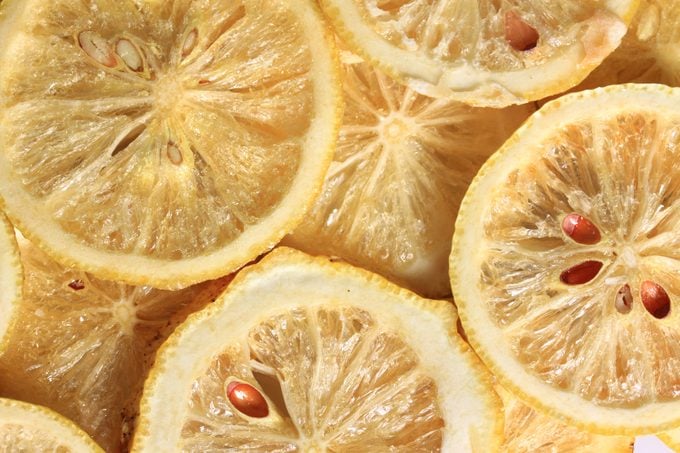4 Easy Lemon Zest Substitutes
Updated: Jul. 07, 2022

Citrus zest has a very specific flavor profile, but there are some workarounds if you're out of lemons. Here's what to use if you need a lemon zest substitute.
Adding just a tiny pinch of lemon zest is an easy way to jazz up baked goods. Zest, often called lemon peel, is the small shavings from the brightly colored and intensely flavored outer skin of citrus fruit. Use it to add a tangy zip to recipes like lemon bars or Lemon Supreme Pie. But what do you do if you’re out of lemons? If you need a lemon zest substitute, there are a few options.
1. Other Citrus

If you’re out of lemons, try using an equal amount of either orange or lime zest for your recipe. (Find more recipes using citrus fruit.) Orange and lemons will give you the same texture and look of lemon zest, but they do have a different flavor profile. If your recipe calls for more than a teaspoon of zest, you’ll also notice a different color in the finished product.
Orange zest works well in sweet dessert recipes like Strawberry Lemon Shortcakes, while lime zest would be perfect for savory recipes like Creamy Lemon Rice.
2. Lemon Extract

Lemon extract is a great substitute for zest because it’s made by soaking lemon peels in alcohol. That gives the extract the same flavor as lemon zest, but it’s significantly more intense, so you won’t want to overdo it. The substitution formula is about as easy as it comes: 1 teaspoon of lemon zest = 1/2 teaspoon of lemon extract.
Lemon extract is perfect for Lemon Crumb Muffins or pound cake, but it also works well in savory marinades that use lemon zest, like Grilled Lemon Chicken.
Afraid you’ll end up with too much lemon extract if you buy a bottle? Use up the bottle with these lemon extract recipes.
3. Lemon Juice

Lemon juice is an ideal substitute when you want to make tart lemon recipes. In a perfect world, you’d want to use fresh lemon juice instead of bottled, but if you have fresh lemons to squeeze for juice, you’d have them for zest, right?
Lemon juice carries the same flavor as lemon zest, but it’s more acidic, so you might want to add a pinch of sugar to balance out the tartness. That said, the lemon flavor is not as concentrated as lemon zest, so you’ll want to keep this formula handy: 1 teaspoon of lemon zest = 2 tablespoons of lemon juice.
Lemon juice is perfect for savory recipes like Steamed Lemon Broccoli when it’s okay to add extra liquid. When baking with lemon juice, only use it as a substitute in small quantities. It’s most ideal in recipes that already have liquid, like lemon curd.
4. Dried Lemon Peel

Dried lemon peel is lemon zest that has been dehydrated, so it’s a fantastic lemon zest substitute. That said, the flavor is much more intense, so use two-thirds less dried lemon peel than the zest called for in a recipe. In other words, if you need 1 tablespoon of lemon zest, use 1/3 tablespoon of dried lemon peel.
Dried lemon peel works equally well in sweet recipes as it does in savory recipes, so substitute away!
When You Shouldn’t Substitute Lemon Zest
If the recipe calls for a large amount of lemon zest (read: more than a couple tablespoons), you should consider making a trip to the store. If you replace a large quantity of zest with lemon juice or extract, you’ll add too much liquid to the recipe, which can change the consistency. And because the juice is acidic, it can react with baking soda and baking powder, creating more air bubbles and changing the overall texture.
While you can skip a small amount of lemon zest altogether, the bright boost of flavor it brings to a dish is unmatched. And there’s no reason to go without it because lemons store so well. Just pop them into a sealed plastic bag (not the flimsy plastic bag from the grocery store) and place in the fridge where they’ll keep for at least a month.
What’s the best way to zest lemons?
The best way to zest a lemon is to use a zester or Microplane grater to scrape off tiny bits of peel. Just make sure you don’t grate too far—the spongy white layer underneath the peel, also known as pith, is bitter.
How much zest do you get from one lemon?
One medium-sized lemon will yield about 1 tablespoon of zest. If you have extra lemons on hand, feel free to grate them all and store zest in the freezer. The zest won’t freeze together in a single block, so you can freeze the zest in a single layer in a freezer-safe bag and measure out tablespoon-sized servings as needed.
The next time you have plenty of lemons on hand, treat yourself to the best lemon desserts.
